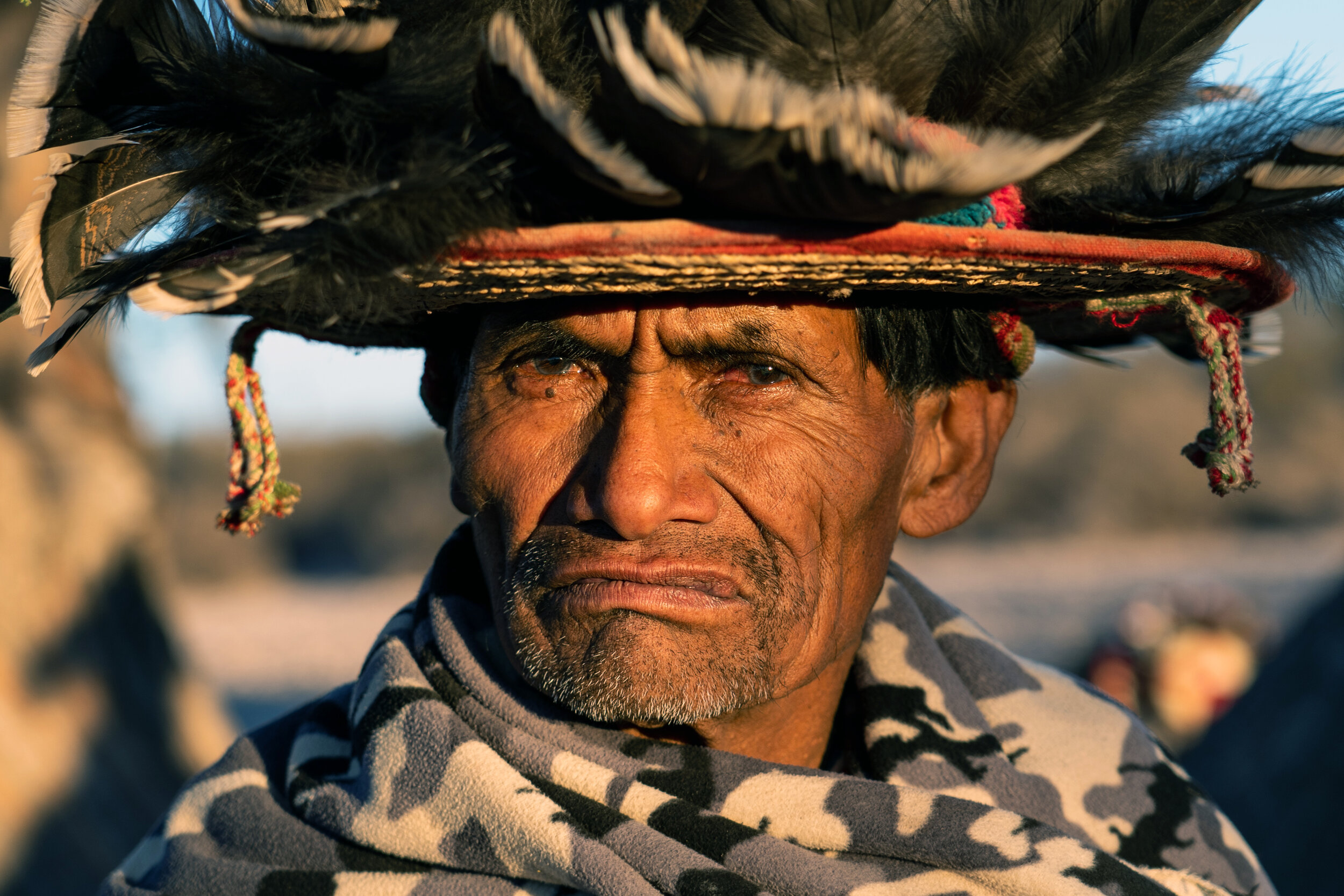
PEYOTE PILGRIMAGE
TO WIRIKUTA
Every Year the Wixárika People Travel to the Deserts of Northern Mexico to Forage for Peyote Cacti
SAN LUIS POTOSÍ, MÉXICO
The Wixárika people (Wixáritari in plural form, Huichol in Spanish) live in the remote Sierra Occidental Mountains, found along the Nayarit, Jalisco, Durango, and Zacatecas states of central Mexico. This small minority group exists in isolation from Mexican society, choosing to carry on their pre-Columbian traditions. Their beliefs and practices centre around the spiritual use of peyote, a psychedelic cactus found in northern Mexico’s deserts. Every year, members from the community travel around 800 km on a pilgrimage to a holy place they call Wirikuta, in these deserts of north San Luis Potosí. They will forage for peyote here, to follow in their ancestors’ footsteps and reconnect with their ancestral homelands.
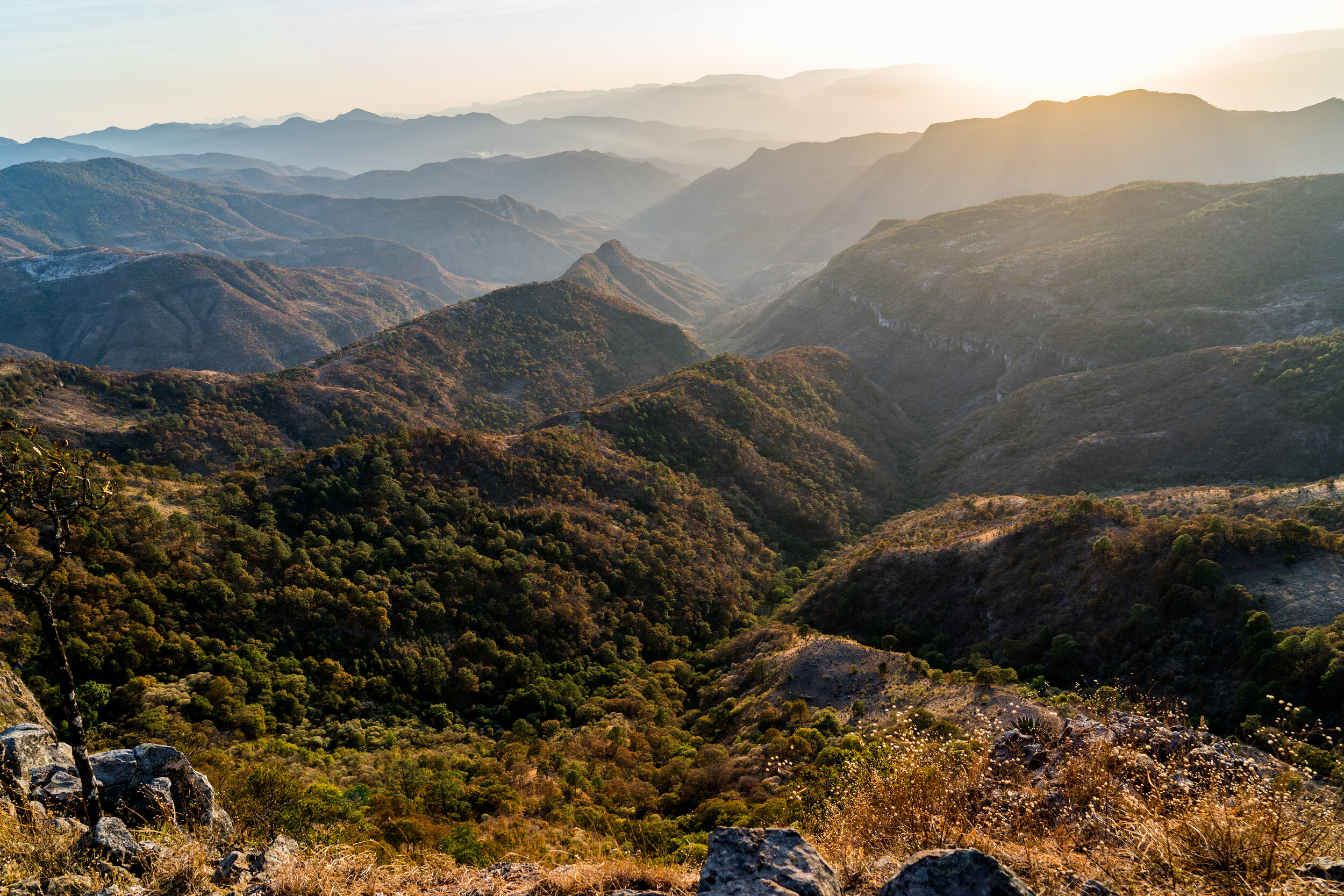
The Sierra Wixárika
La Tristeza, Nayarit, Mexico. March 2021.
The Sierra Occidental mountain range along the borders of Nayarit, Jalisco, Durango, and Zacatecas states in central Mexico is the homeland of the Wixáritari. These remote pine and cactus-covered mountains, with steep vertical rock faces and few roads, allow the Wixáritari to live in relative isolation from the rest of Mexican society. They speak their own language and spend their days growing corn, beans, and other vegetables and livestock on the mountain slopes.
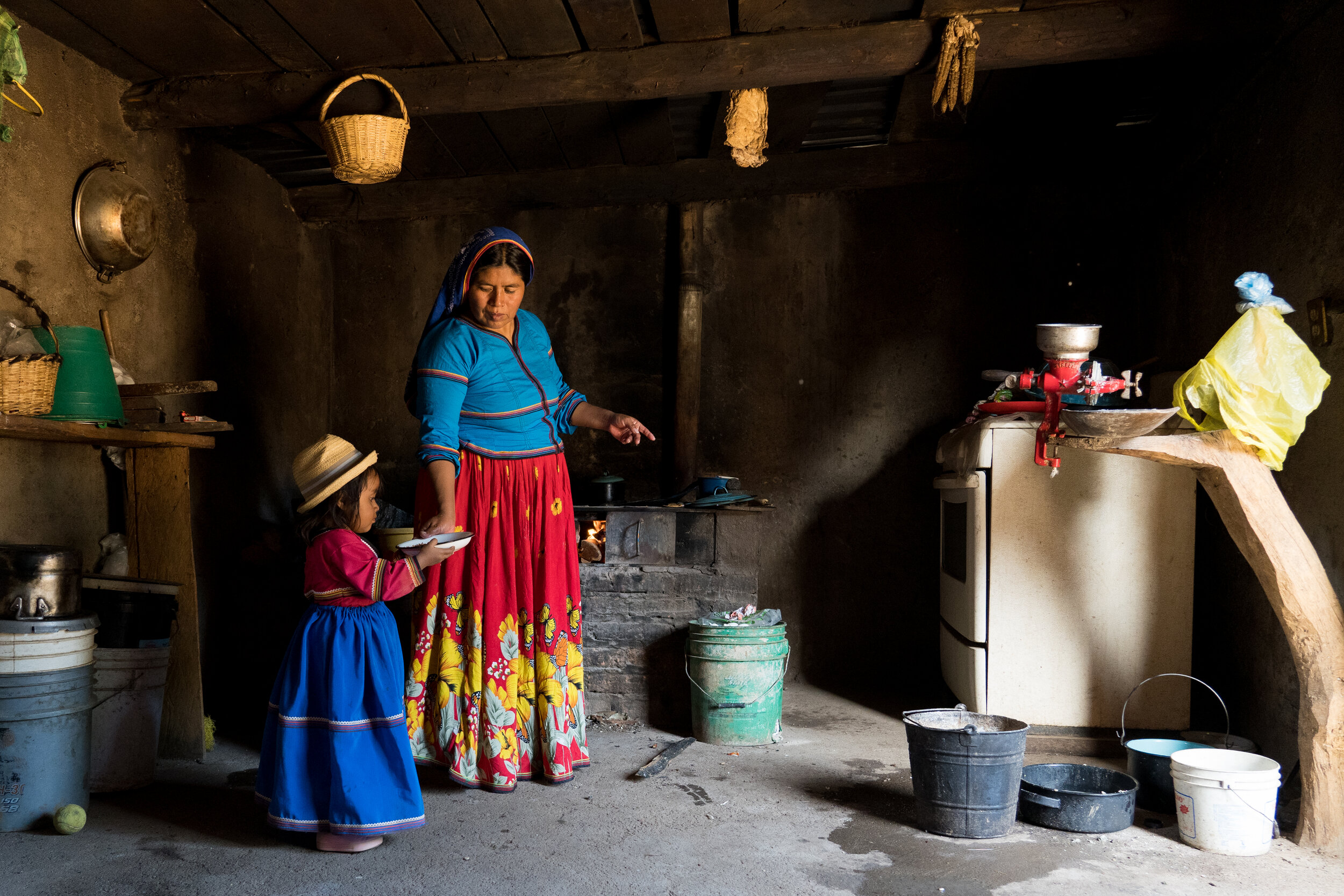
Home Life for the Wixáritari
La Cebolleta, Jalisco, Mexico. March 2021.
Native women prepare meals composed of corn. Corn is not only a staple ingredient but is also considered a deity. Corn is typically soaked, dried, ground, and turned into a masa dough for tortillas. The Wixáritari grow a variety of produce -- beans, green beans, tomatoes, tomatillos, chilis, and squash. They also make homemade cheese.
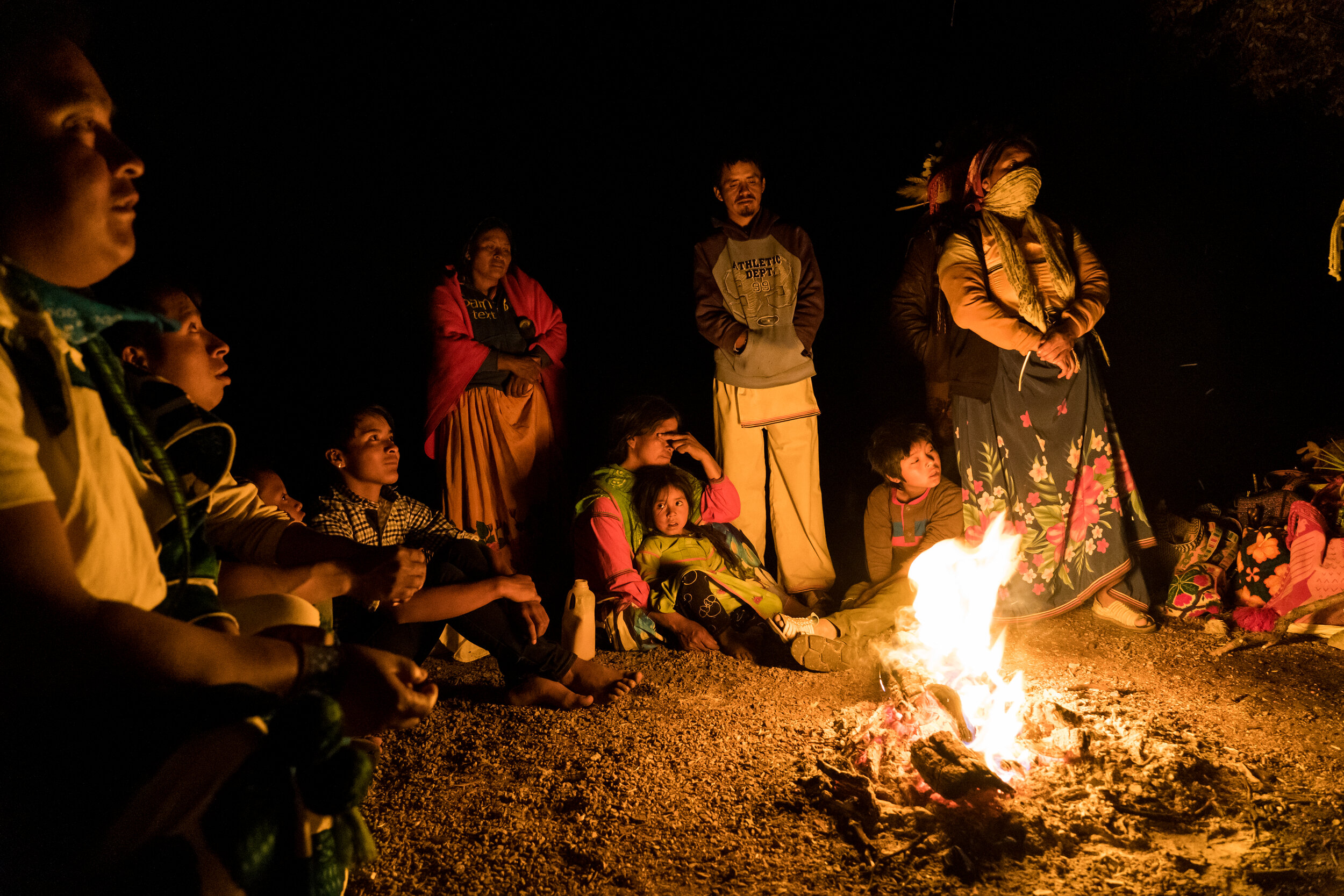
Love Confessions
Cruses, Zacatecas, Mexico. March 2021.
Before the pilgrims or hikureros can arrive in Wirikuta, they must follow the rituals of their ancestors. One of the pilgrims’ first rituals is a public confession intended to purify one’s soul before continuing with the pilgrimage.
Each pilgrim must confess all of their previous romantic partners to a governing council. A secretary records the lovers’ names. Knots are then tied in a palm leaf for each name mentioned, and the list is read publicly to the entire group. Everyone will then place their palm leaves into the fire as a symbol of letting go of the past and cleansing.
Another ritual is name changing. The pilgrimage leaders will change the names of commonly encountered items and places in the desert. The desert becomes the ocean; cars become ships; donkeys become giraffes; and cows become elephants. This ritual helps the pilgrims prepare for the peyote journey mentally and visually.
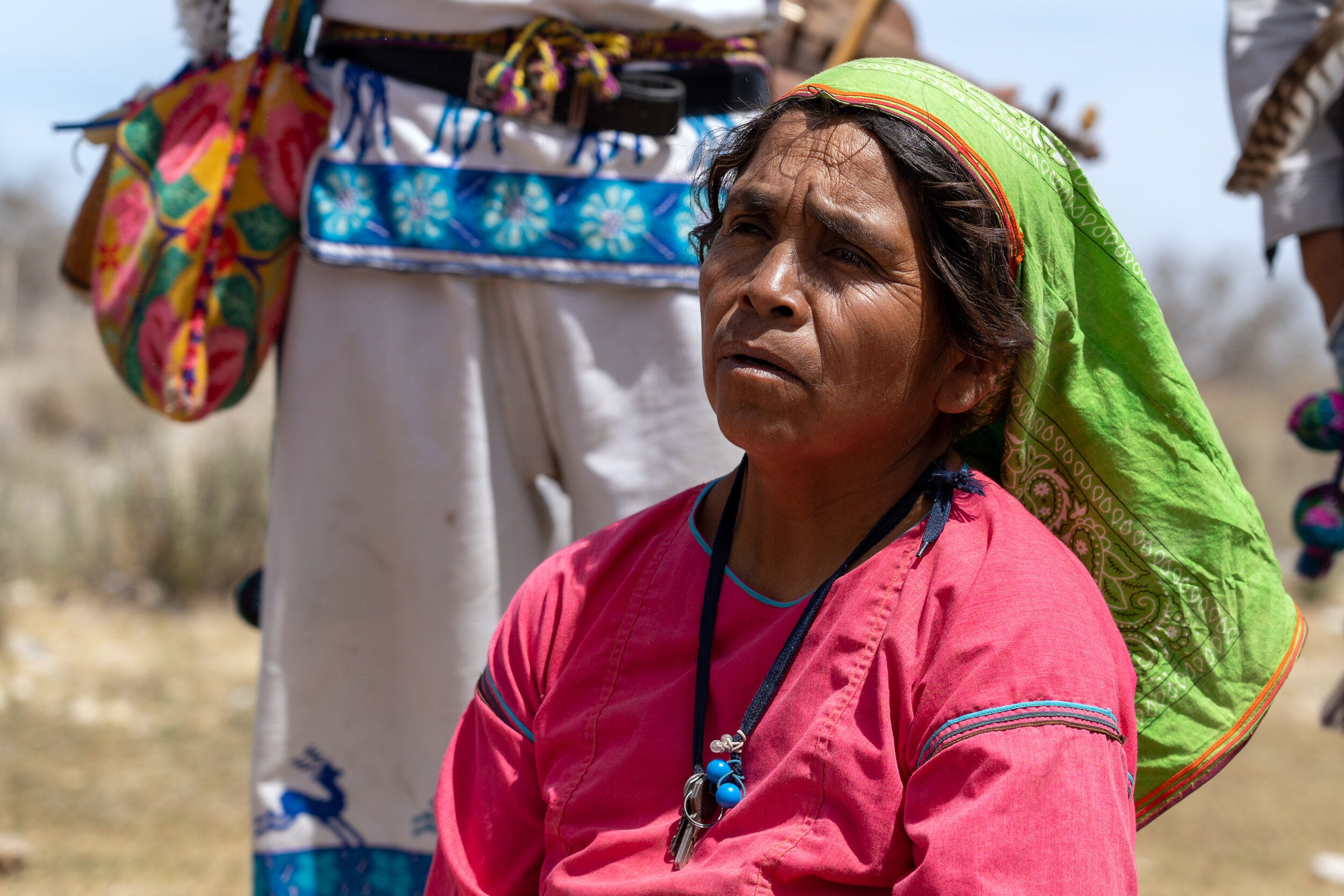
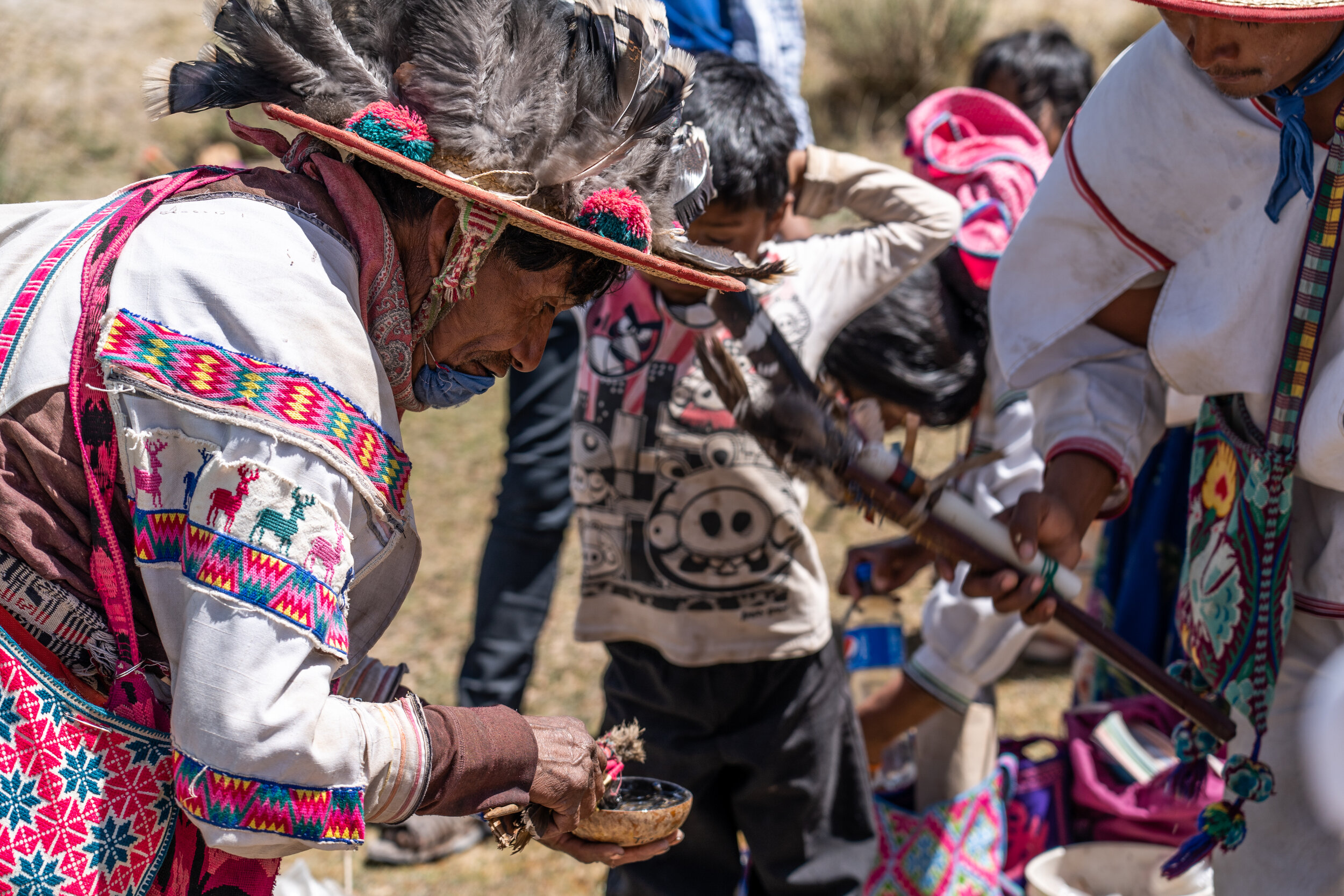
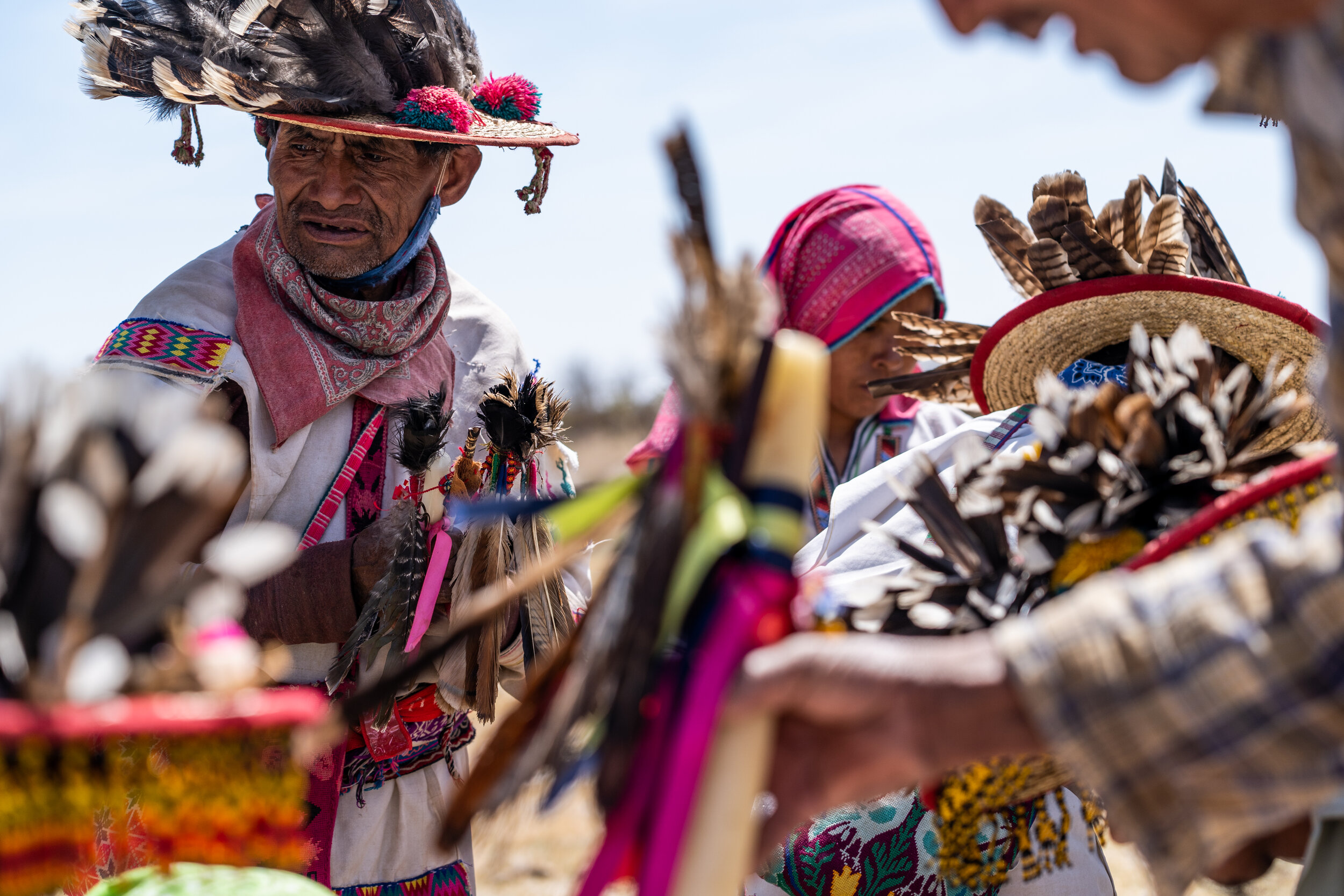
Water Blessings
San Juan del Tuzal, San Luis Potosí, Mexico. March 2021.
Along the way to the desert, the pilgrims make offerings at several sacred sites. Two of these sites in central San Luis Potosí are located at naturally bubbling springs. Here, the pilgrims will use brushes to baptize each other using water from the springs.
Water is a vital resource for the Wixáritari, as their culture originated in the desert after fleeing the Aztecs. They migrated to the mountains in the 1500s when the Spanish began to conquer Mexico. Water also represents one of the eminent deities in the Wixárika religion.
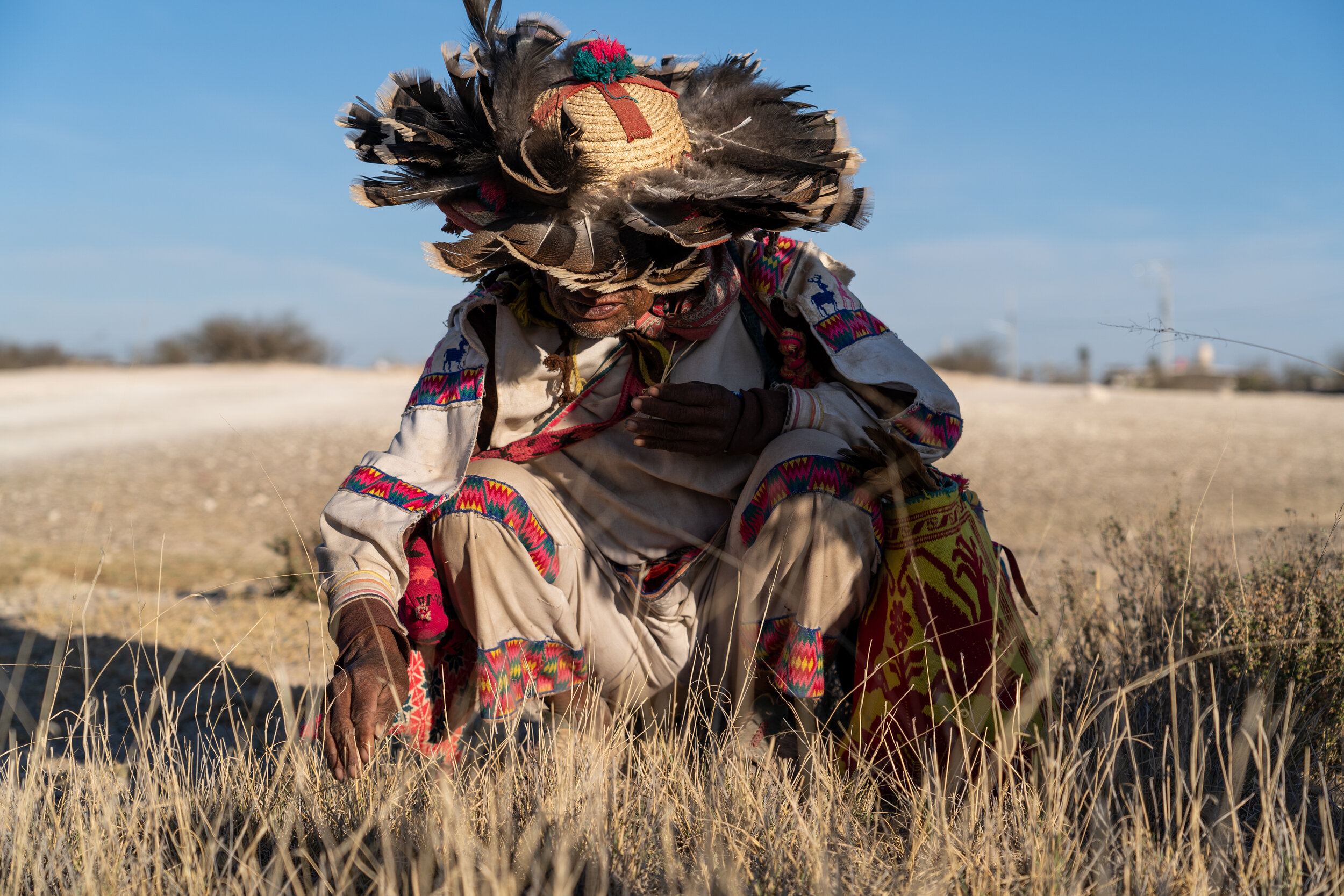
Collecting Blades of Grass
Yoliatl, San Luis Potosí, Mexico. March 2021.
Before leaving the grasslands of central San Luis Potosí, Wixáritari pilgrims collect pointy pieces of grass as well as branches from a tree they call “raiz amarillo.” The branches are used the morning of the peyote forage. They are ground up and mixed with water to create yellow paint. The group will use the grass blades to apply the yellow paint to their cheeks, creating patterns that look like tiny, ornate suns.
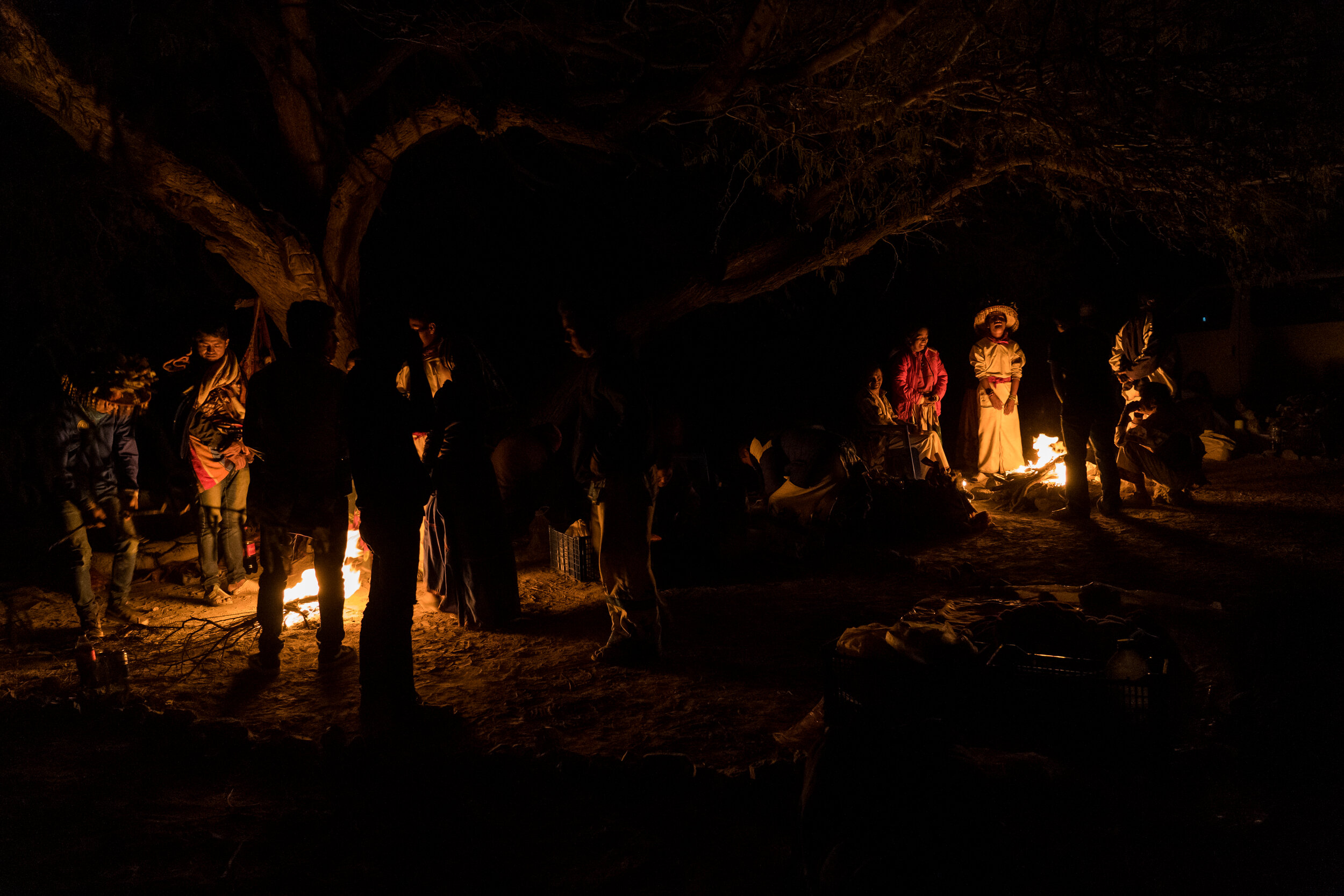
Merriment in Wirikuta
Catorce Desert, San Luis Potosí, Mexico. March 2021.
After the pilgrims finally arrive in Wirikuta, they spend the entire night before the forage dancing, singing, and playing music around the fire. They play wooden fiddles, chant and sing Wixáritari songs, and step dance throughout the night. When the sun rises, they take a quick rest and prepare their offerings, machetes, and baskets for peyote or hikuri foraging.
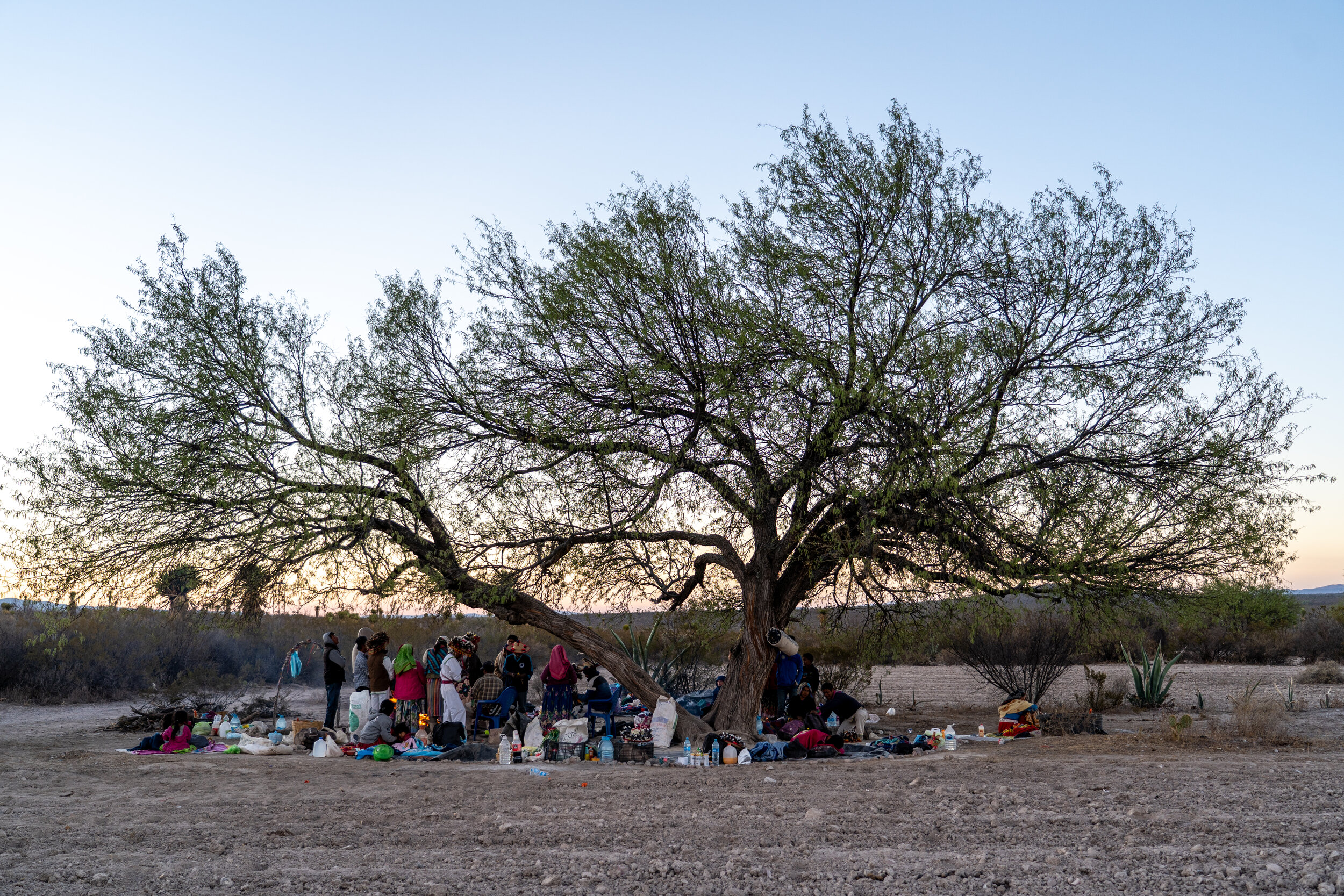
Waking Up under Home Tree
Catorce Desert, San Luis Potosí, Mexico. March 2021.
The entire group of 30 pilgrims sleeps underneath one big tree in the Wirikuta desert, which provides comfort and shade in the unforgiving desert. Each family lays out a tarp to claim a spot, placing their blankets and food bins in one area to prepare for staying overnight. As temperatures plummet in the evening, families huddle together under their blankets or stand around a raging bonfire.
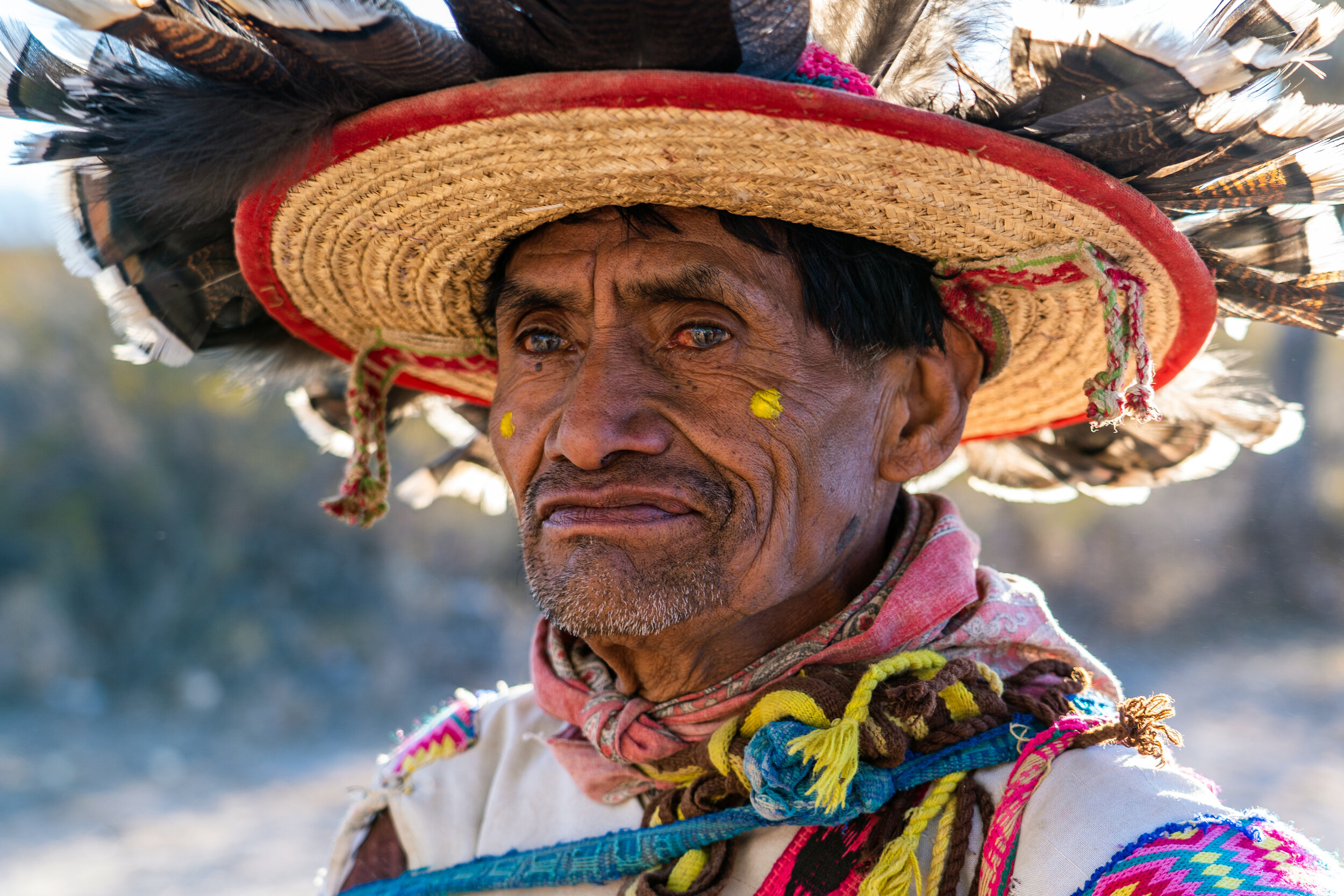
The Face of an Elder Wixárika
Catorce Desert, San Luis Potosí, Mexico. March 2021.
Juan Miguel is the ceremonial guardian of the La Tristeza “patio familiar” Rancho in the Sierra Occidental mountains of Nayarit. The guardian lives approximately a 1.5 hour hike from the road in a small house in the mountains. His only income source is making and selling art— specifically wide-brimmed hats strewn with beads and feathers. With two yellow sun dots on his cheeks, he is ready to go foraging for peyote.
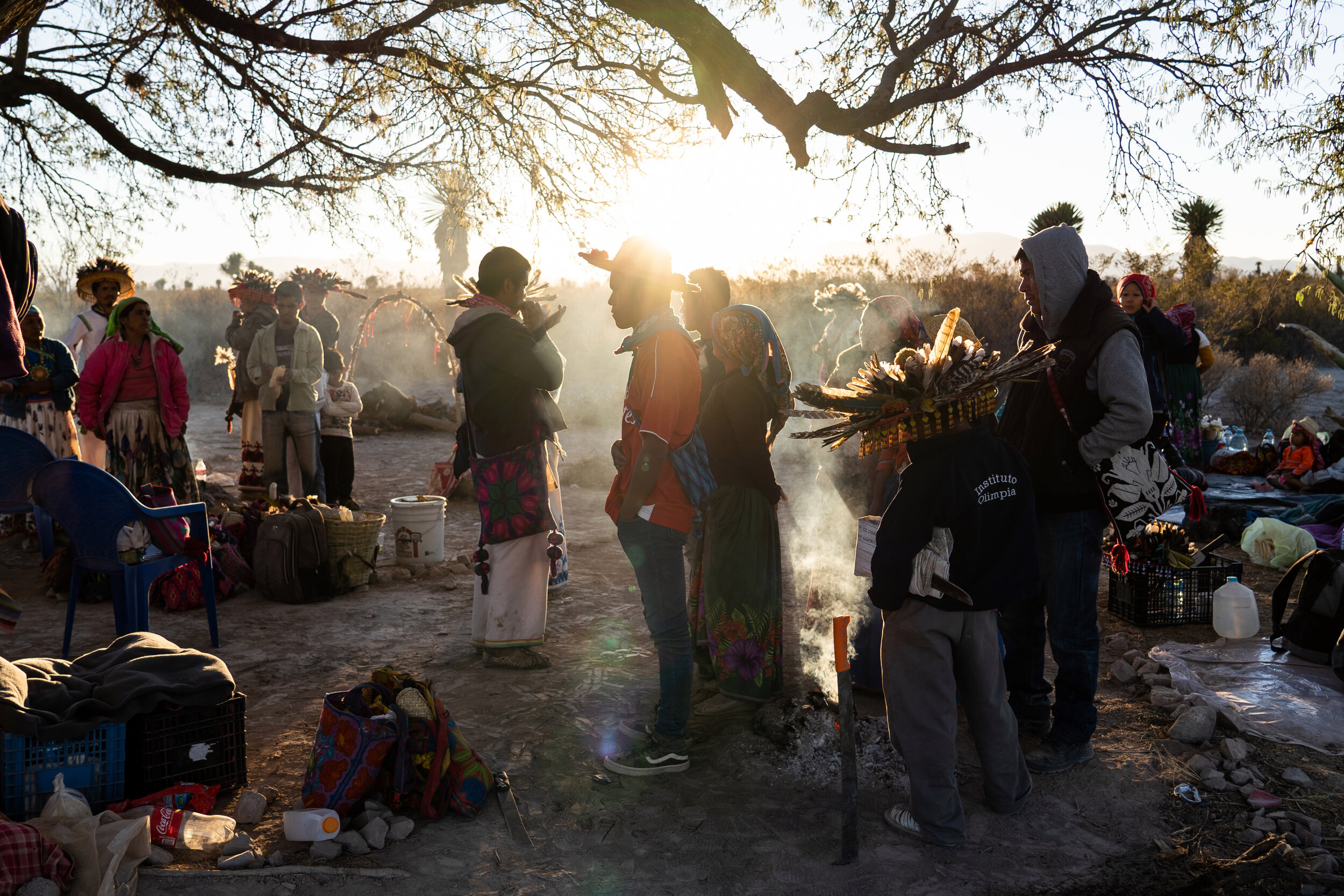
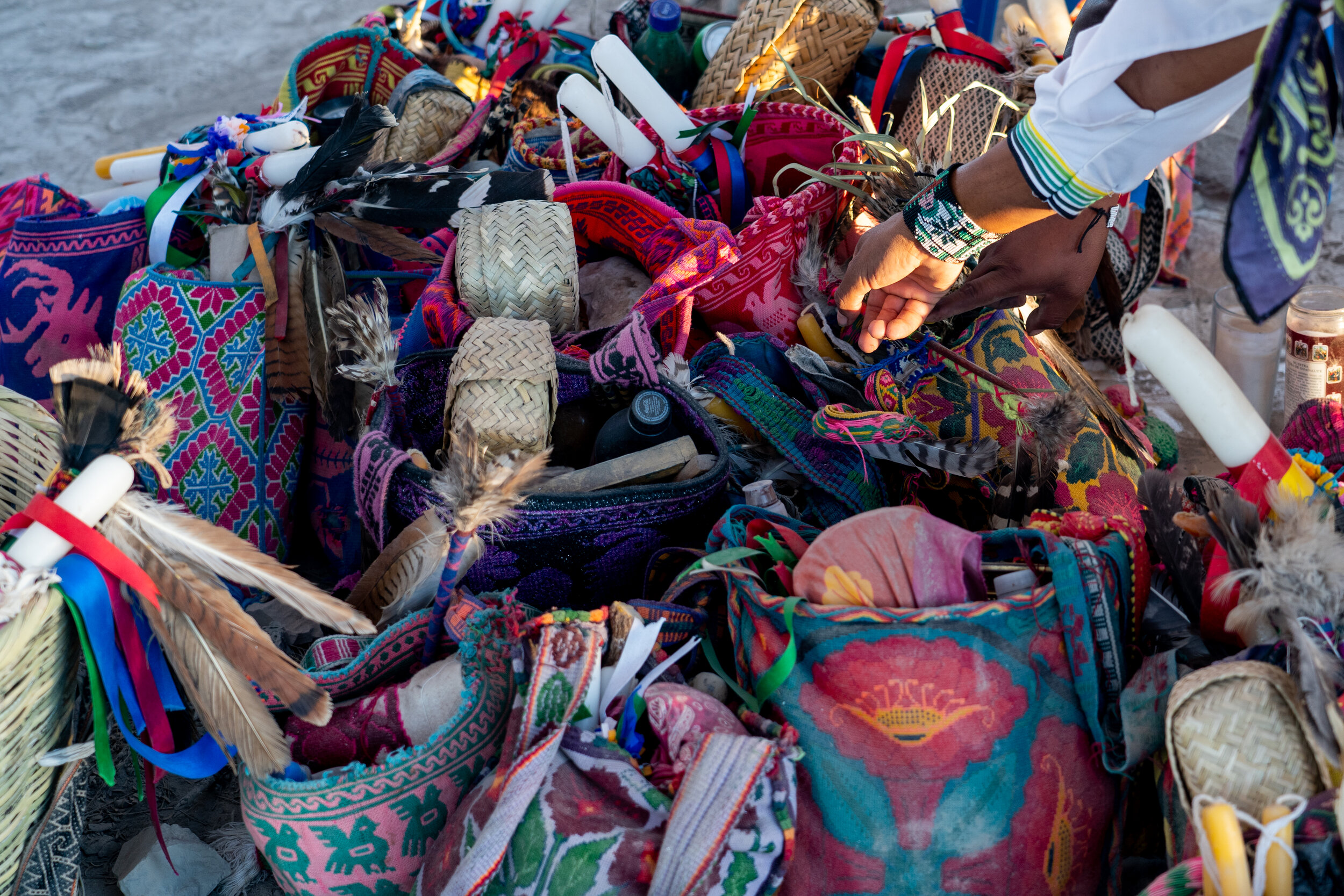
The Offerings before the Harvest
Catorce Desert, San Luis Potosí, Mexico. March 2021.
The shaman blesses all the offerings. Offerings consist of candles, coloured strings, five peso coins marking the five holy cardinal directions, and Guadalupe’s pictures, representing the mother goddess.
The pilgrims will bring along the offerings to the forage. Before heading out to find peyote, the pilgrims will walk in a circle around the campfire.
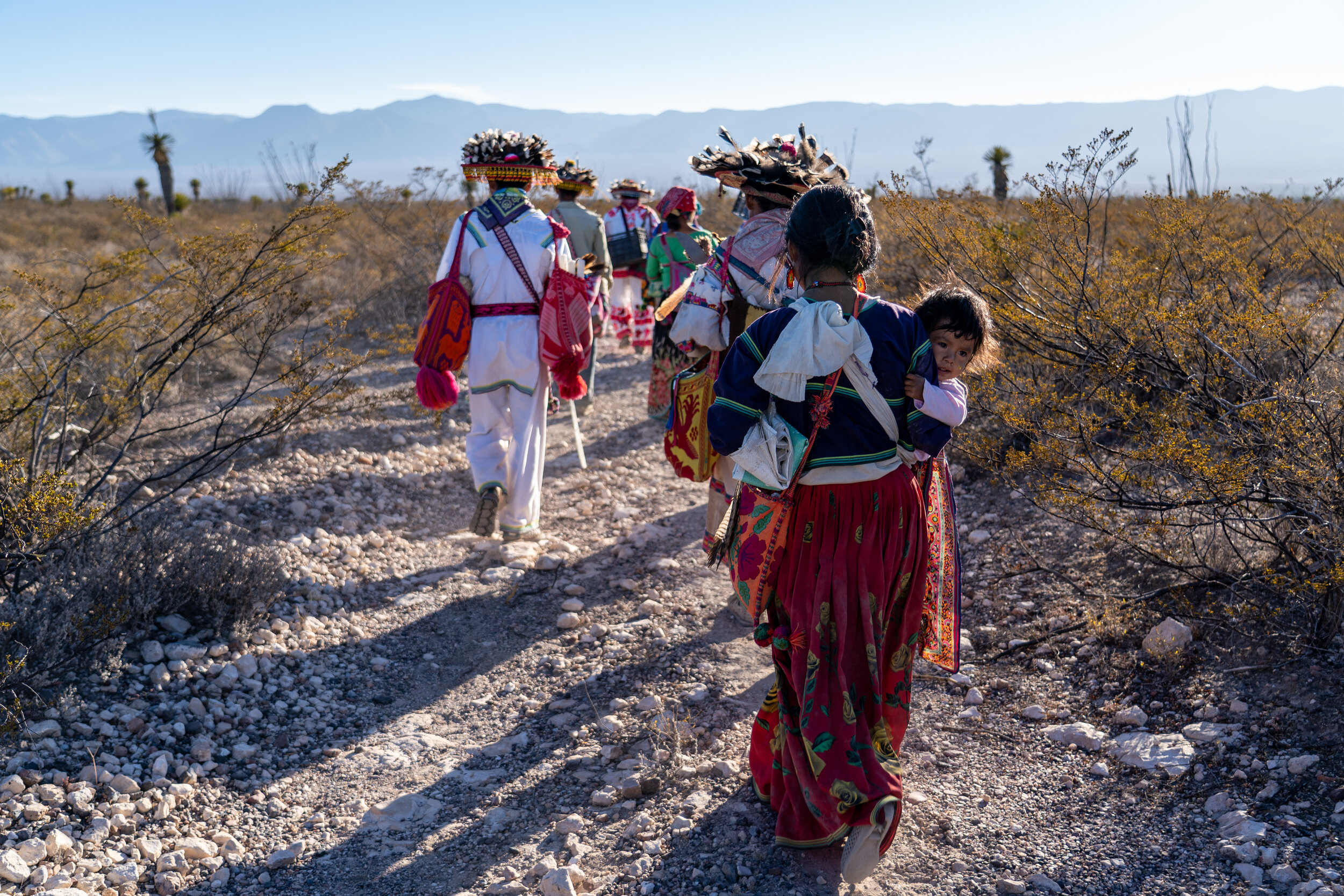
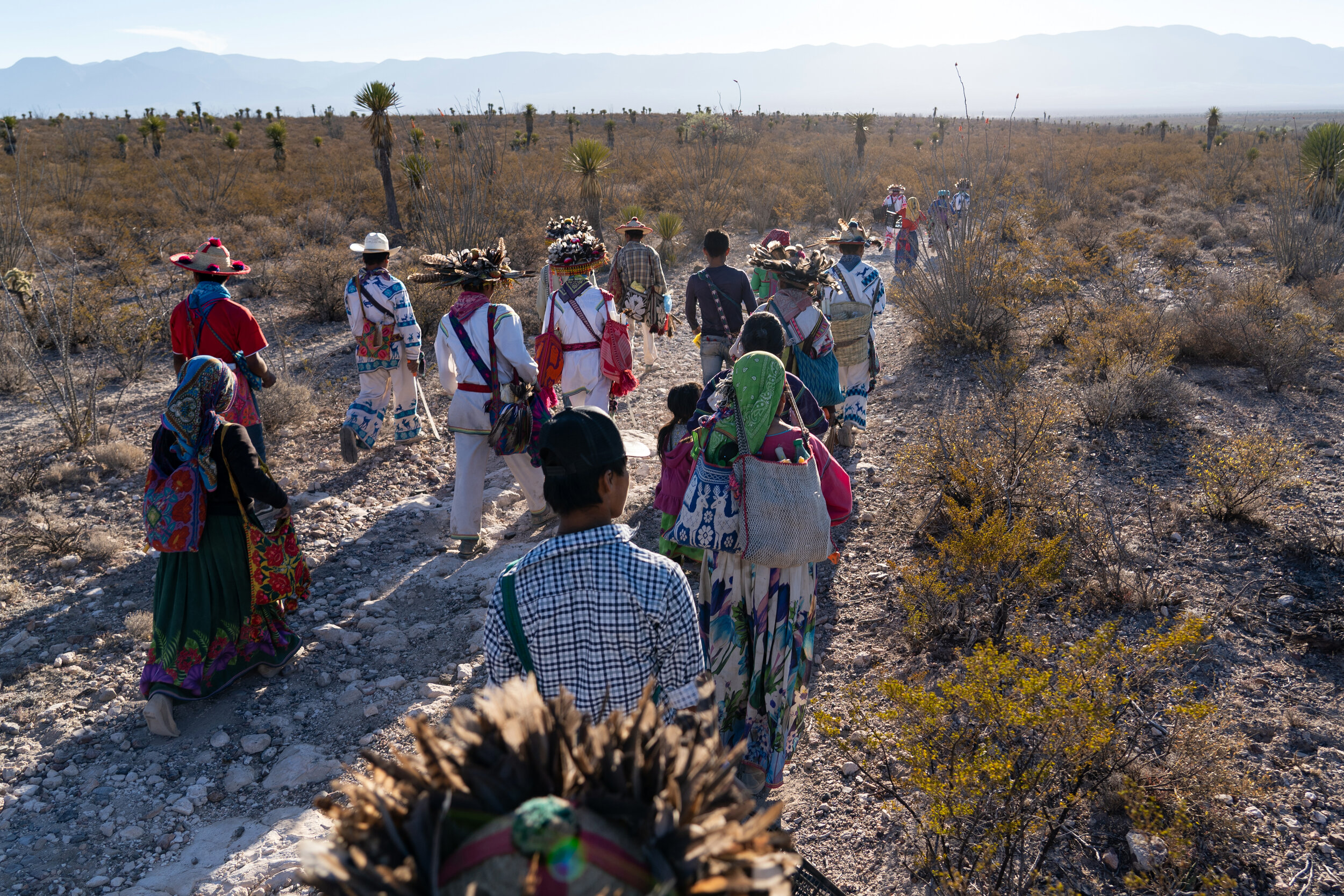
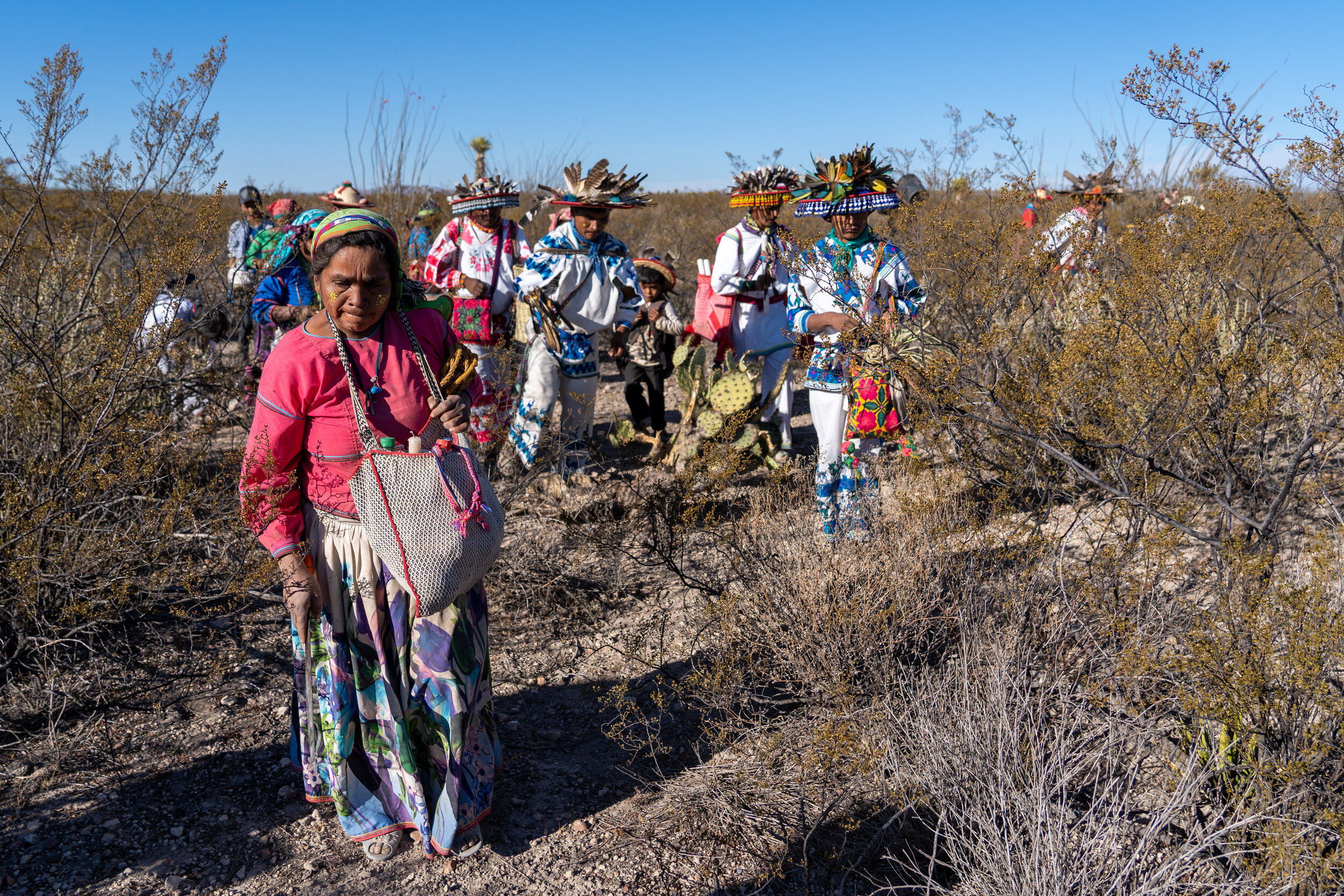
Into the Desert of Wirikuta
Catorce Desert, San Luis Potosí, Mexico. March 2021.
After sunrise, the pilgrims head off into the desert to begin a full day of foraging for peyote cactus. This small, green, squishy cactus resembles a green muffin. The plant is found near the roots of bushes and thorns. Only the very top of the cactus is visible; it camouflages well within the dusty earth. Each family will not stop searching for peyote until they have found a sufficient supply for the rest of the year.
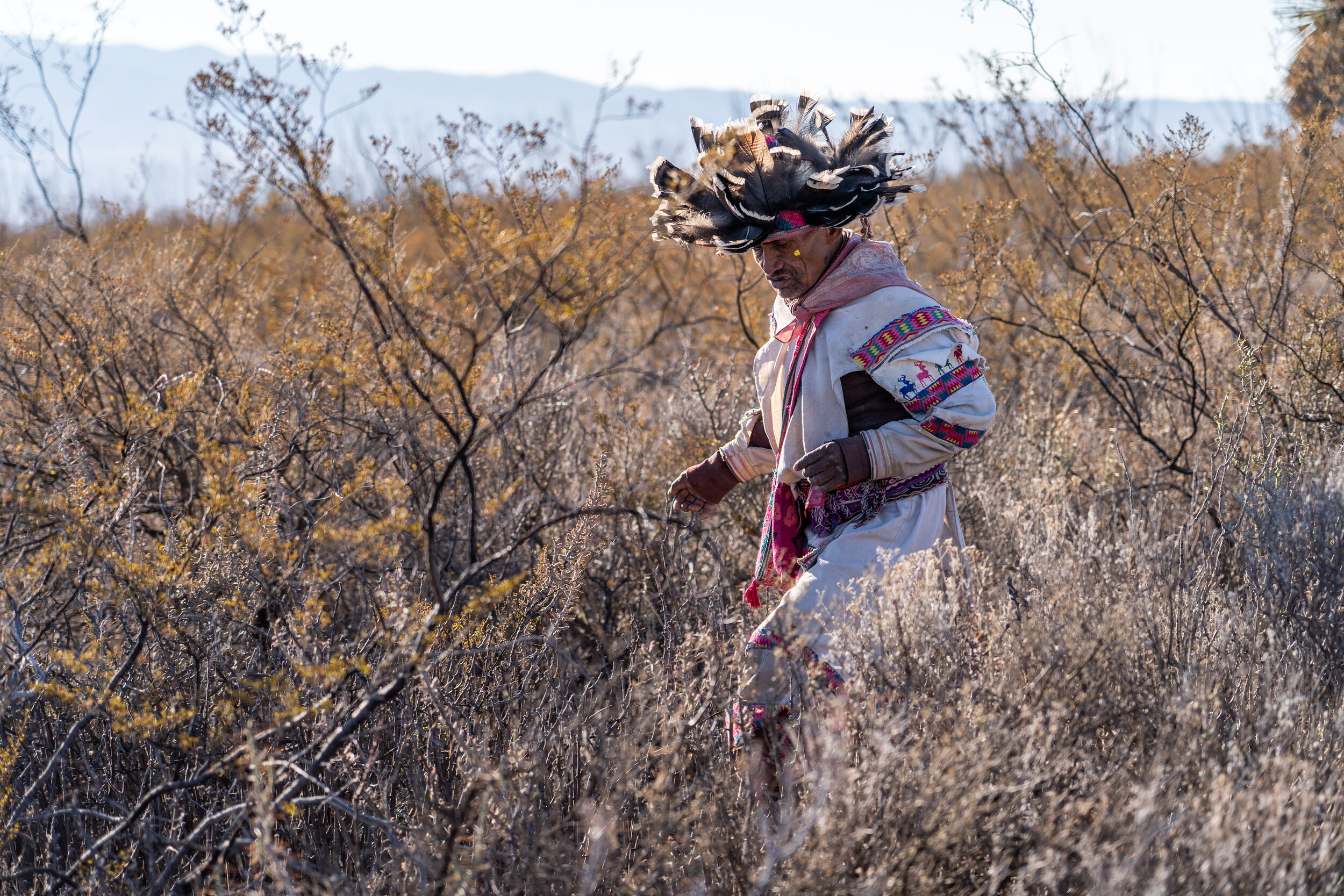
Foraging in the Thorns
Catorce Desert, San Luis Potosí, Mexico. March 2021.
The Wirikuta desert outside Real de Catorce is composed of dense scrub brush and thorns. Finding peyote is a difficult feat. The task requires looking carefully underneath thorn bushes, requiring a sharp eye to locate the elusive green bulbs.
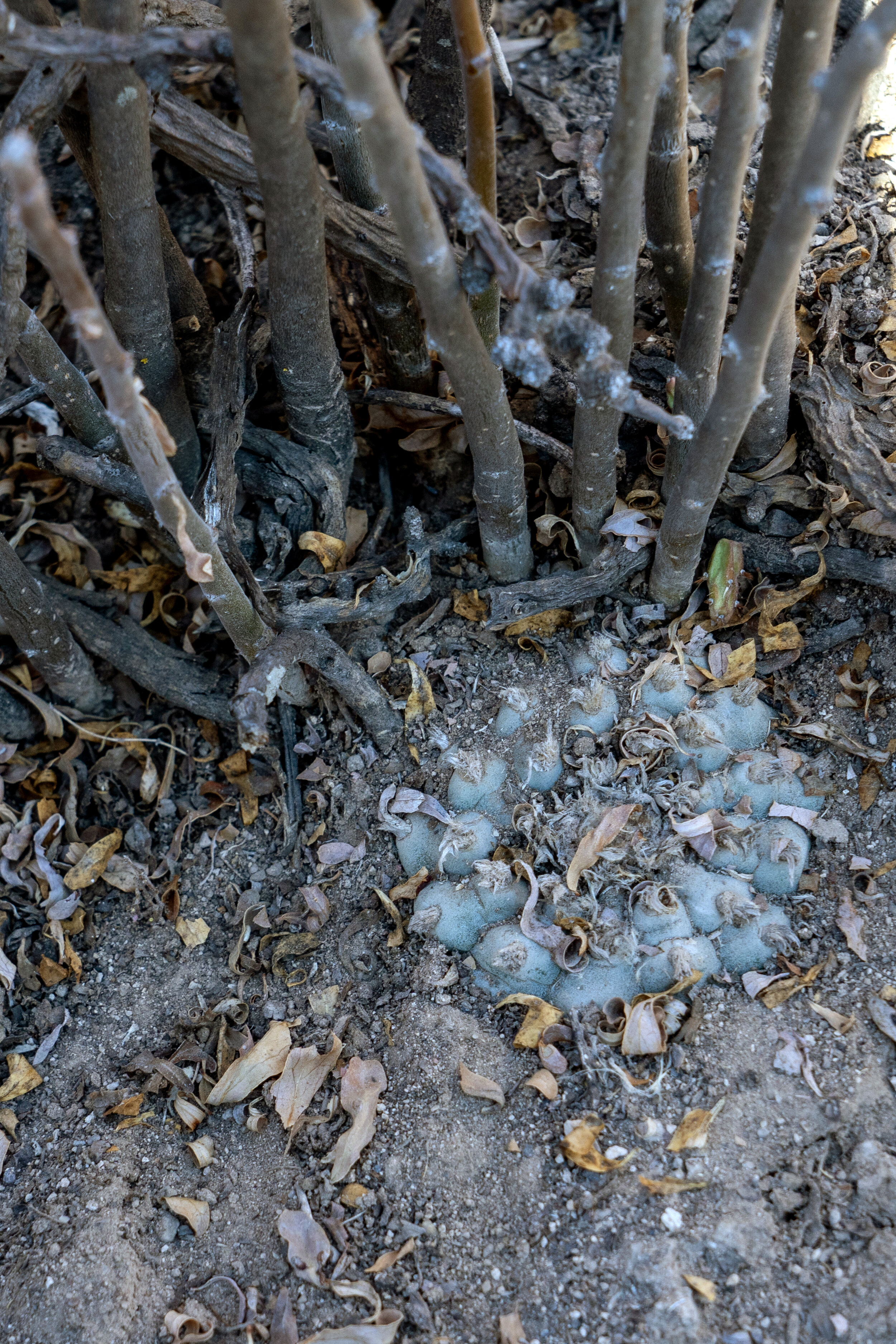
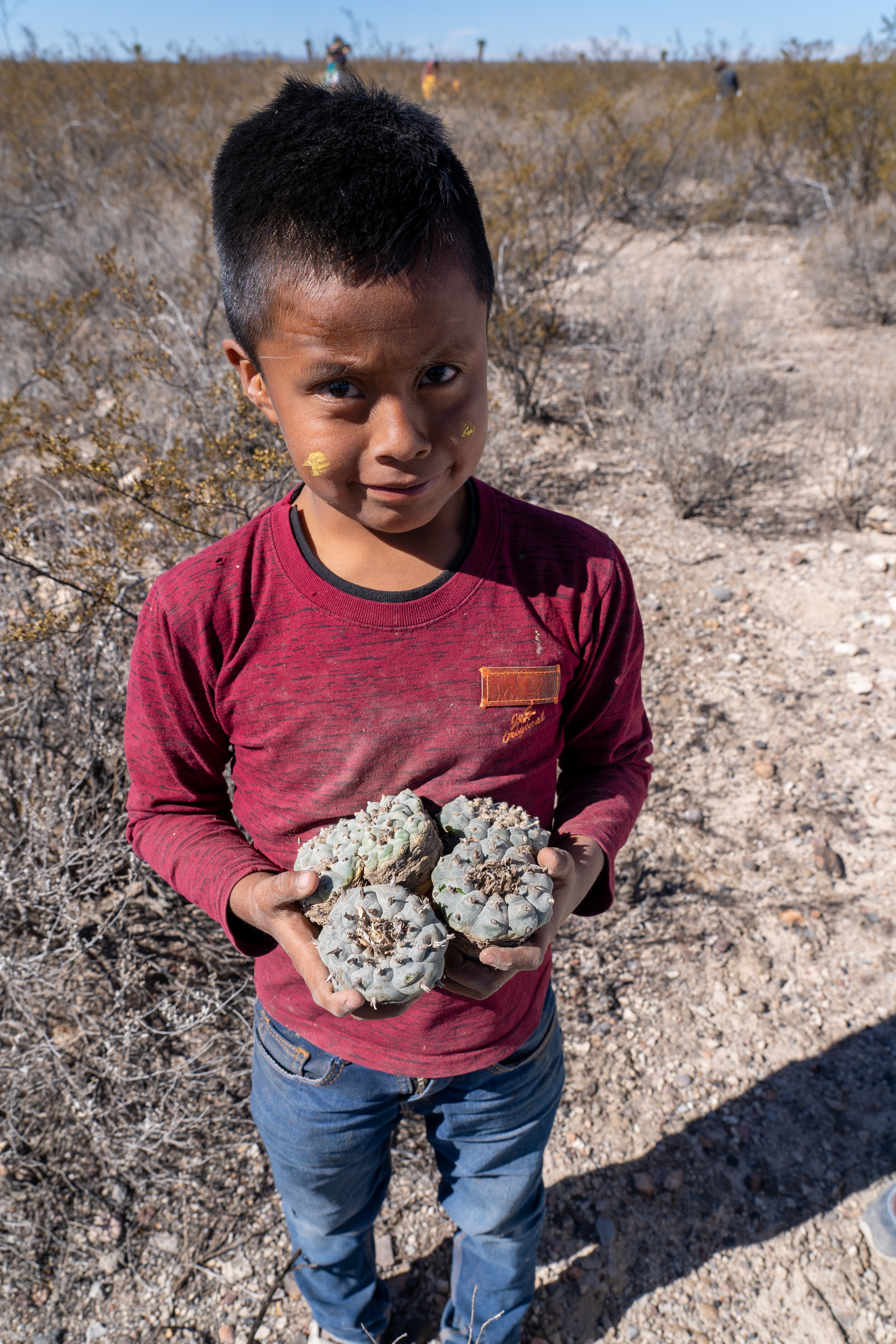
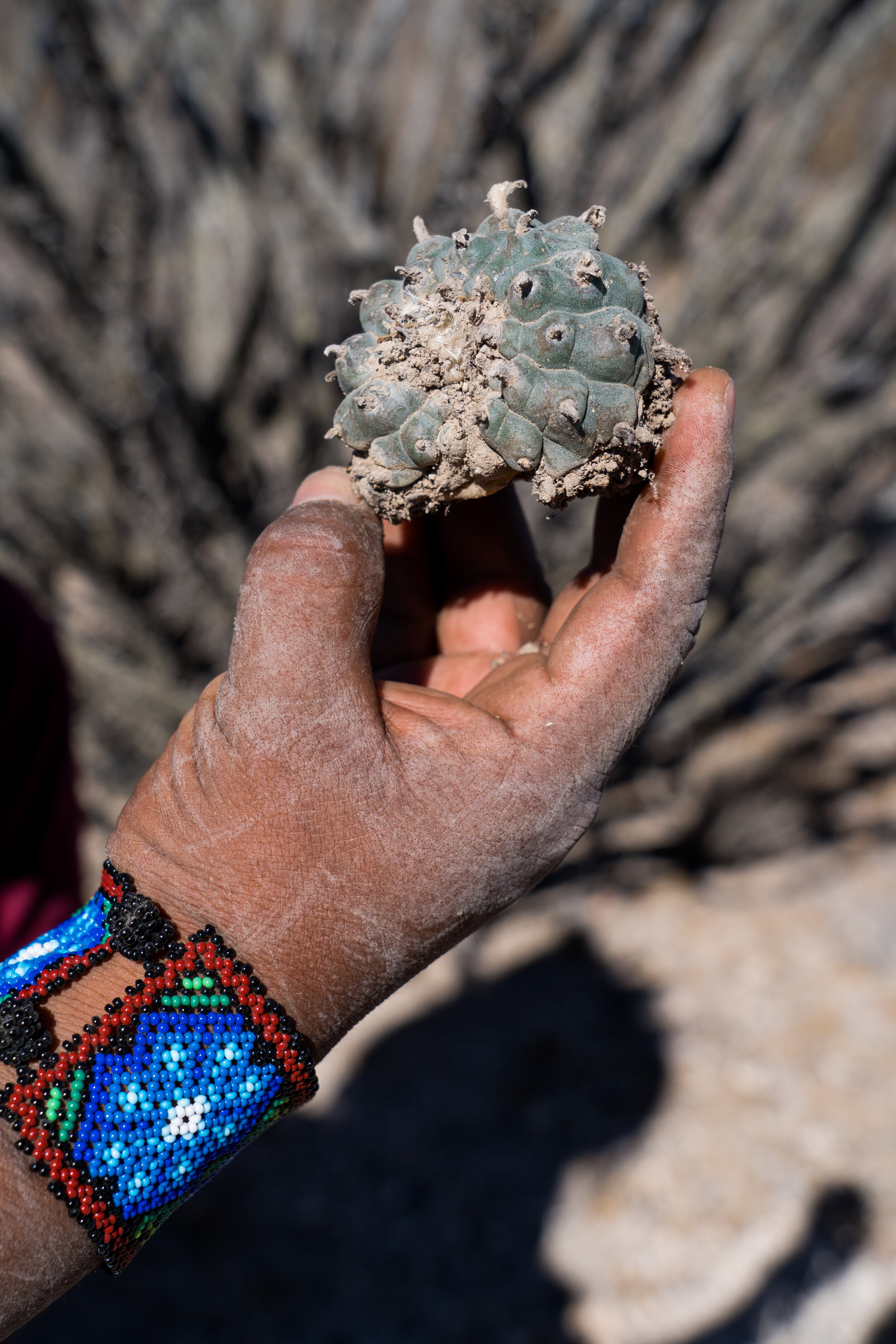
Collecting Peyote
Catorce Desert, San Luis Potosí, Mexico. March 2021.
Once a pilgrim locates a plant, they carefully dust the soil off from around its top and sides and then use a machete to cut the root about two inches below the crown. This ensures that they can replant the crowns when they return home and that there is enough of a root left for the plant to grow back in the desert.
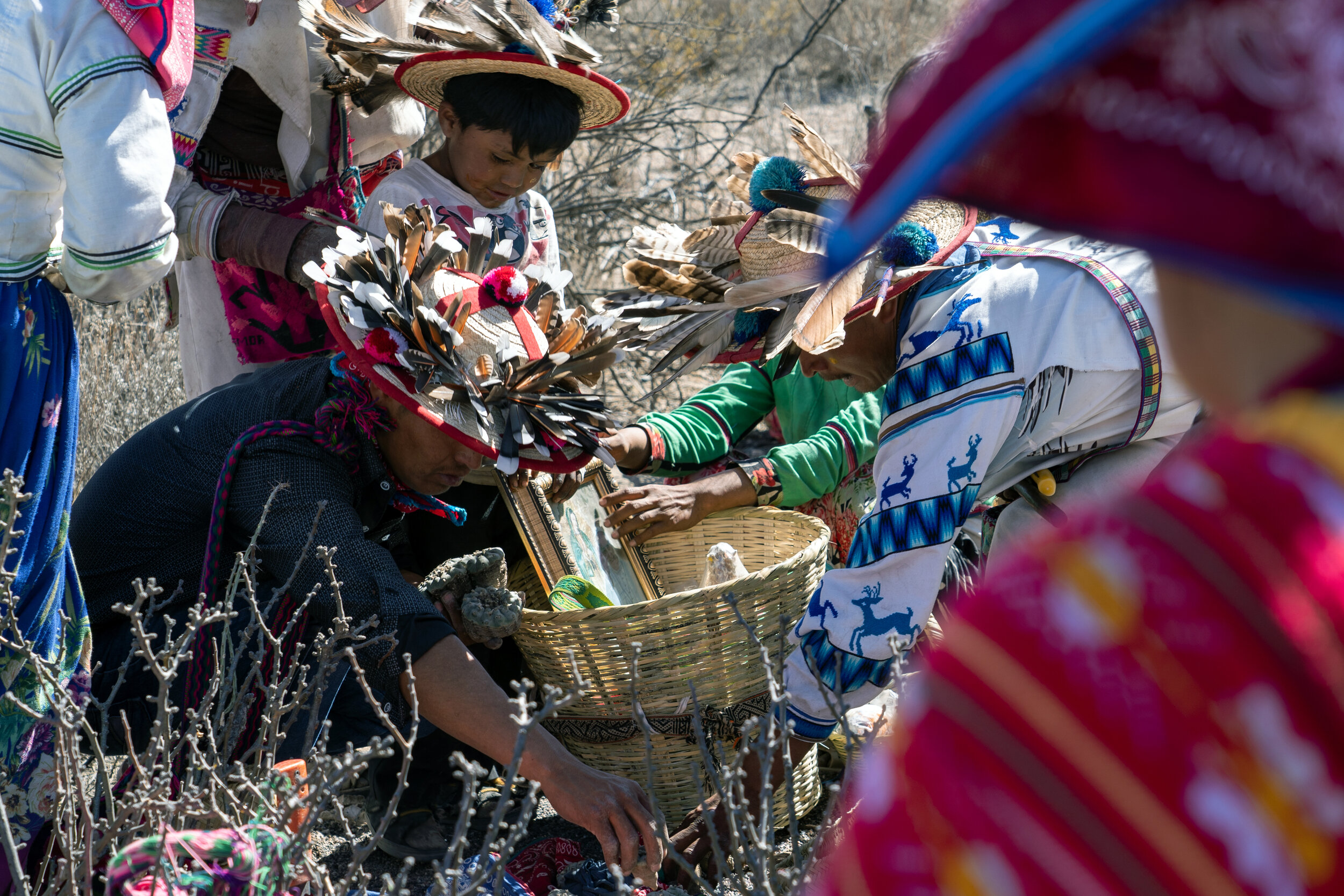
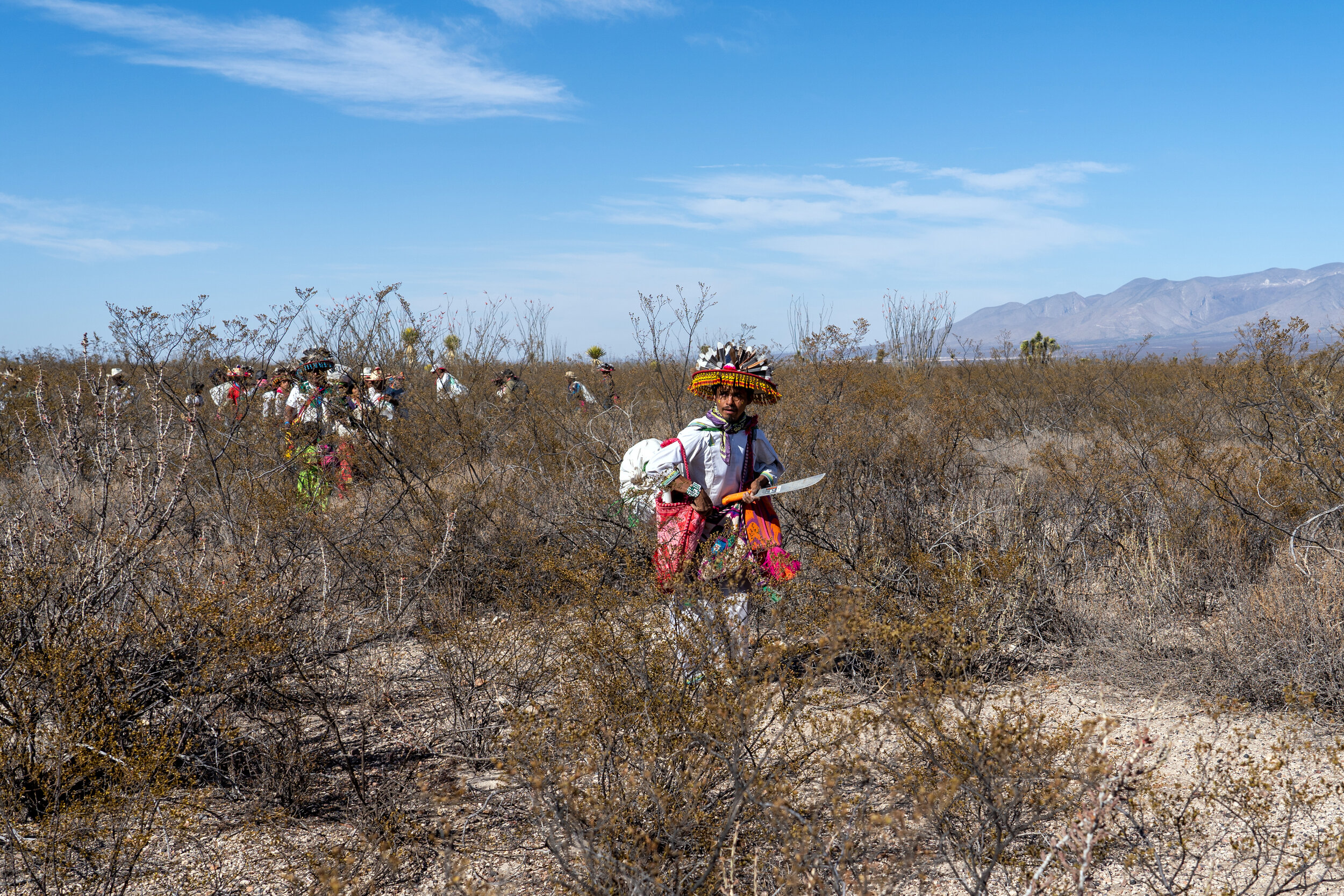
Ending the Forage
Catorce Desert, San Luis Potosí, Mexico. March 2021.
Under the blistering late afternoon sun, the group gathers at a meeting point in the desert to bless their harvest and leave offerings to Mother Earth. After a final blessing, the group brings their collective findings back to the home tree.

Wirikuta
Catorce Desert, San Luis Potosí, Mexico. March 2021.
Wirikuta holds a special place in Wixáritari culture. After fleeing from Aztec aggression many hundreds of years ago, the Wixárika culture developed here in this desert, and it is where their ancestors first found and consumed peyote.
As the Spanish conquistadors took over Mexico in the 1500s, ravaging Mexican tribes with unknown diseases and brutality, the Wixárika fled again, finally settling in their current homeland of the Sierra Occidental Mountains. Here, they have continued with their cultural practices developed after centuries in the desert. These pre-Columbian practices continue today.
In a nod to their ancestors’ sacrifices and wisdom, the Wixáritari return to this desert every year to collect their holy peyote, a plant they use ceremonially to communicate with their ancestors in the spirit world.
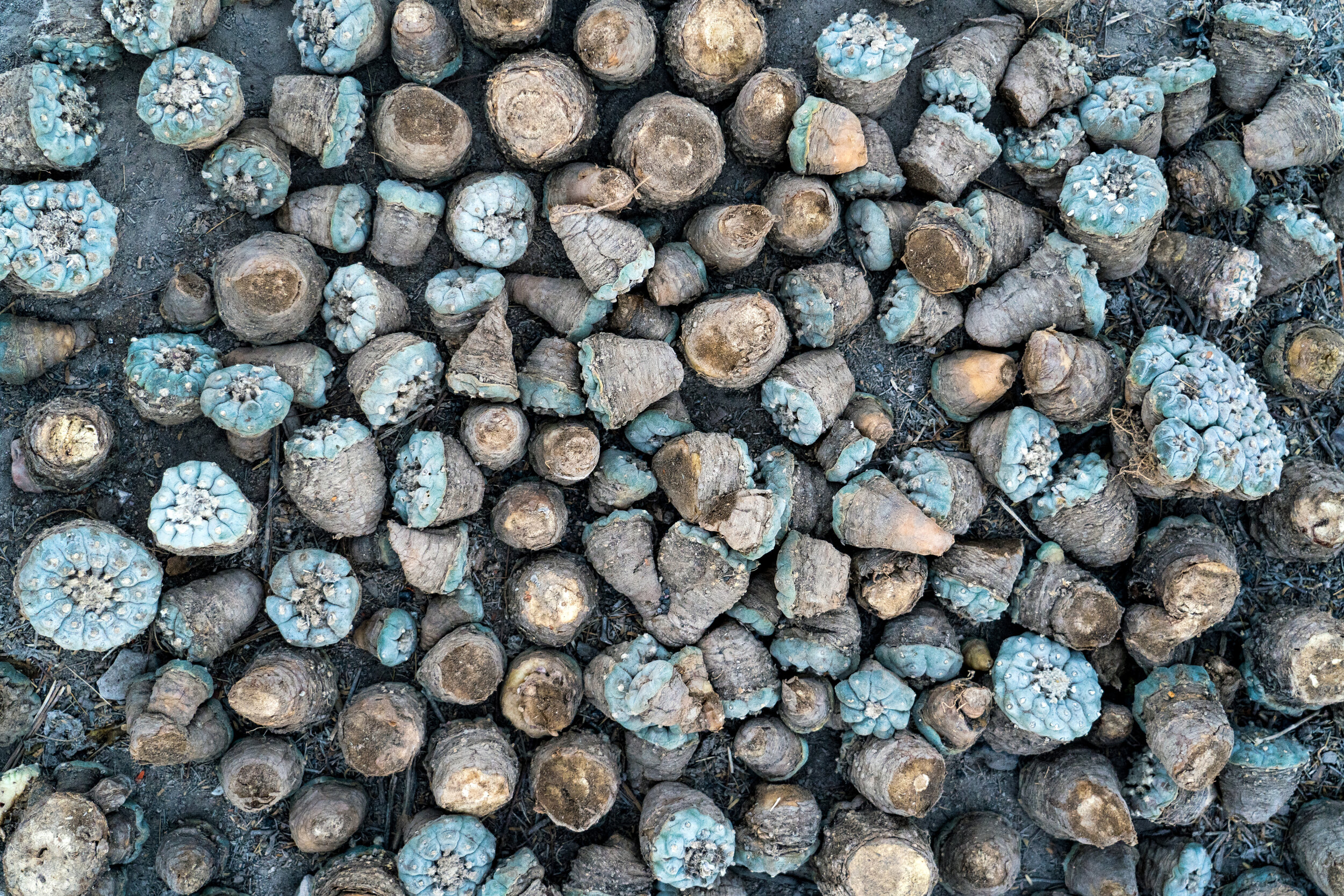
Hikuri Harvest
Catorce Desert, San Luis Potosí, Mexico. March 2021.
Hikuri is the Wixáritari word for peyote. Without peyote, Wixárika culture essentially ceases to exist, as much of their beliefs, art, and history are defined by spiritual peyote usage. Their right to peyote usage is protected by law in Mexico, but threats to their peyote supply still exist in the form of illegal harvesting and land threats from ranches, farms, vineyards, and mines.
Every year during the pilgrimage to Wirikuta, each family aims to collect between 100-150 crowns of peyote, which they will re-plant when they return to the mountains and consume in ceremonies throughout the year. Plants from the day’s harvest are left out to dry for a few hours in the desert air before they are packed away in large plastic cement bags.
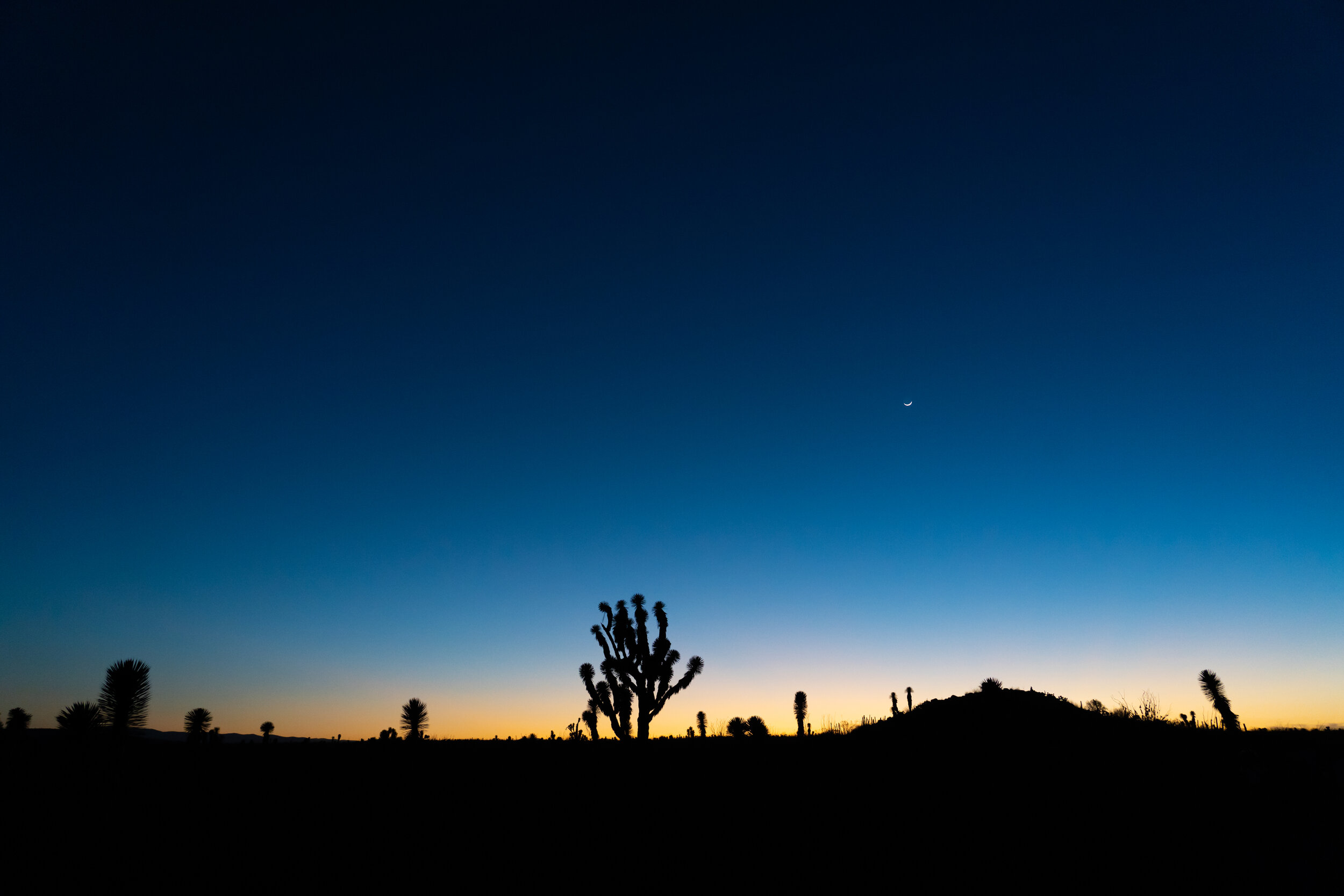
The Last Blue Hour in Wirikuta
Catorce Desert, San Luis Potosí, Mexico. March 2021.
As the last light of the day leaves Wirikuta, all the pilgrims climb a nearby hill to bless their family’s harvest. During this ceremony, each pilgrim will consume peyote. They will ingest no more than one crown, typically just a few bulbs.
The peyote is blessed on an altar with candles and cleaned with water. Each piece is cut open and prepared by the head of the household. He removes the root bark and spines, breaking the peyote into its lobes. He will bless the lobes and carefully place pieces into the outstretched hands of each family member. Each person will receive the offering, consuming it on the spot.
This micro-dose is ceremonial, a token of acceptance and gratefulness for the day’s harvest. To feel the psychedelic effects of peyote, one must consume approximately 100 to200 grams of wet cactus, far greater than what is consumed during this offering ceremony.
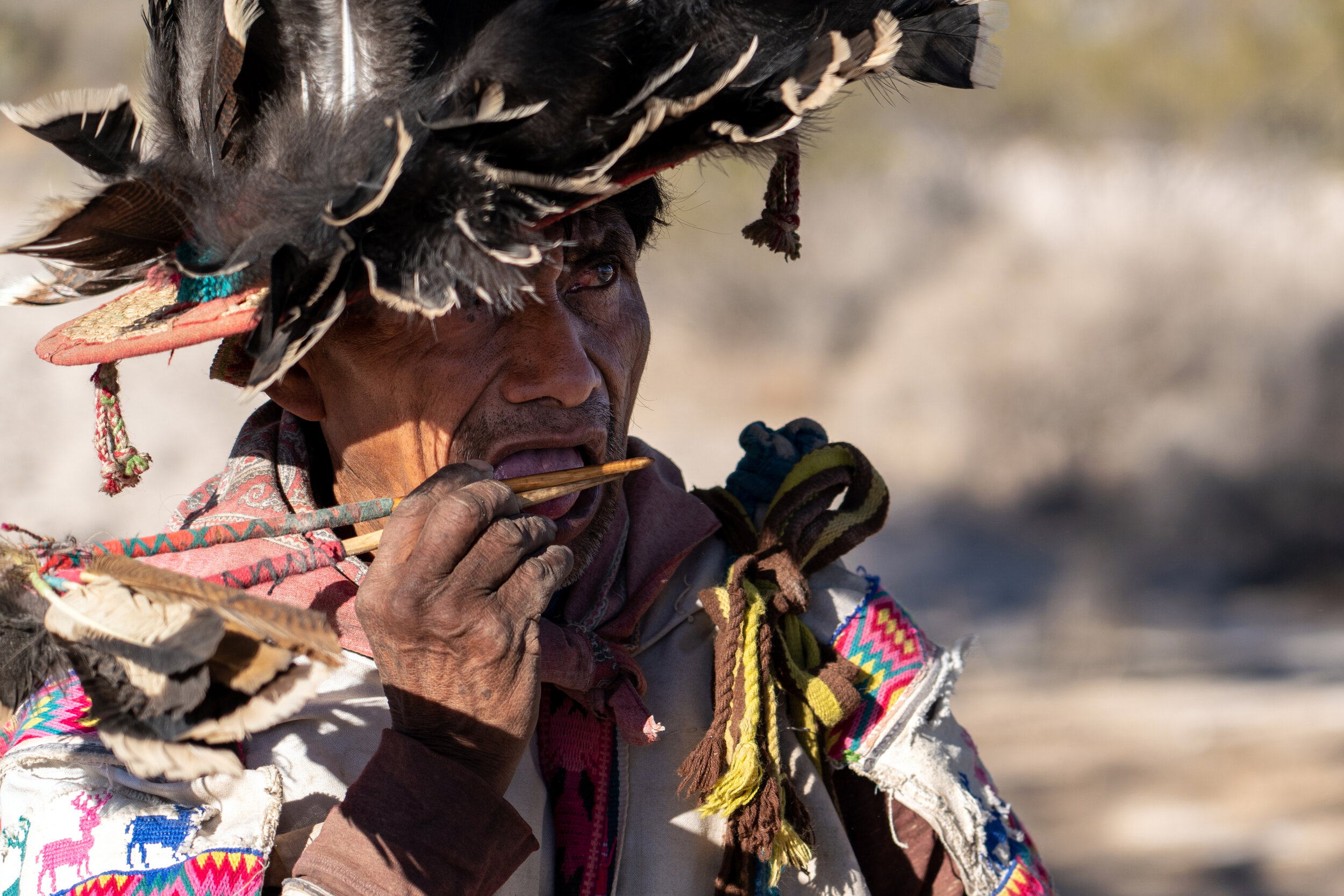
The Last Offerings
Catorce Desert, San Luis Potosí, Mexico. March 2021.
The last part of the journey involves climbing to the top of the Cerro Quemado Hill to leave final offerings. Here, the pilgrims give thanks for their journey, harvest, and life, blessing their many annual returns to this sacred land.
